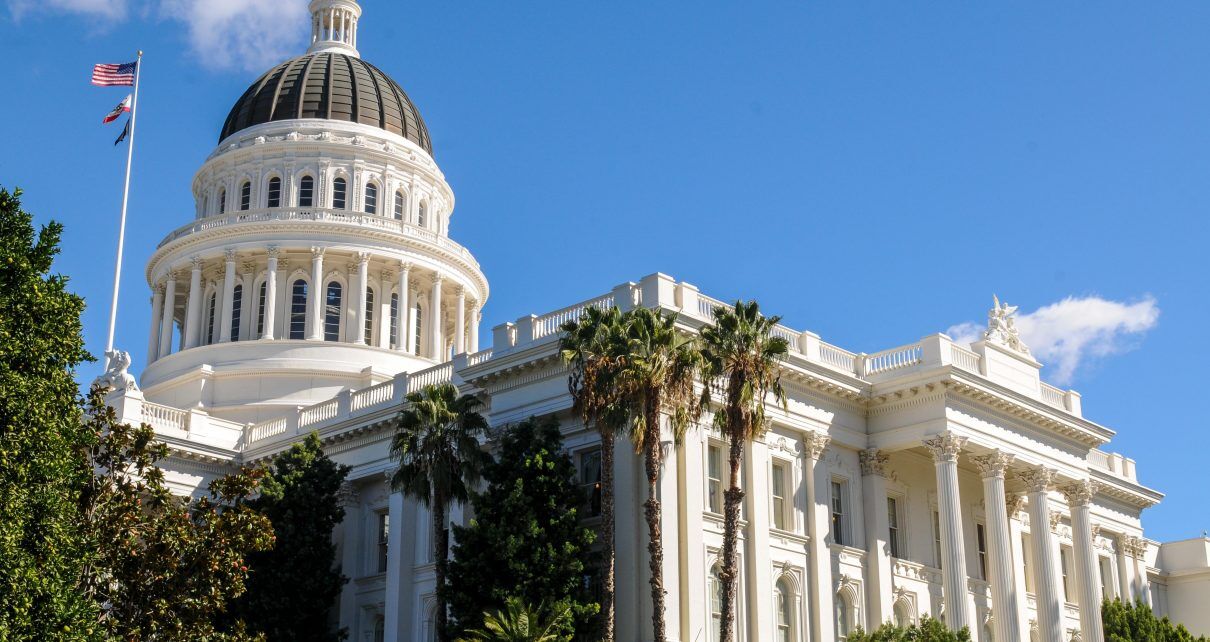
California State Capitol. (Photo: Kevin Sanders for California Globe)
Frequently Asked Questions on California’s Suspense Files
Is there any exception to the Suspense File rules?
By Chris Micheli, February 5, 2024 2:55 am
Which committee(s) uses a “Suspense File”? The two Appropriations Committees in the California Legislature have a process they call the “Suspense File.”
How does a bill get referred to the Appropriations Committee? First, any bill which has been keyed “fiscal” by the Office of Legislative Counsel is re-referred to the fiscal committee in each house, called the Appropriations Committee, unless that measure is placed on consent or the amount of the bill’s fiscal impact is below a certain threshold established by the respective committees.
What is the purpose of the “Suspense File”? It is generally used by the Appropriations Committees in the Senate and Assembly as a means of managing their bills. The intent behind the Suspense File is to consider and vote upon all of the fiscal-related bills at one single time, followed by a determination of whether those bills stay or leave the Suspense File.
How is a bill placed on the Suspense File? Bills may be referred Suspense by a vote of a majority of the members of the committee that are present and voting, pending further consideration by the committee.
How is a bill removed from the Suspense File? A bill may be taken off the Suspense File and heard upon two days’ notice published in the Daily File by a vote of a majority of the members of the committee present and voting.
How many of the introduced bills have a fiscal impact? The vast majority of bills, on average about 80% of them, go before the Appropriations Committees of each house for consideration after the policy committee has passed the bill, but before the bill reaches the floor of the respective house.
What is the Suspense File threshold in the Assembly? In the Assembly Appropriations Committee, the bills referred to the Suspense File are those with a fiscal impact of $150,000 or more from any fund source in any fiscal year and any bill in which the primary purpose is to create a task force, commission, work group, a report, or a study. All of these categories meet the criteria for referral to the committee’s Suspense File.
What is the Suspense File threshold in the Senate? In the Senate Appropriations Committee, the bills referred to the Suspense File are those bills that would have a fiscal impact in any single fiscal year from the General Fund (including general obligation bond funds) or from private funds of $50,000 or more. Also referred to the Suspense File are pilot project bills if the statewide implementation of the project or program would result in a fiscal impact of $50,000 or more in any single fiscal year from the General Fund or private funds.
Is there any exception to the Suspense File rules? An exception to this rule applies if the bill is a deficiency or supplemental appropriations bill authored by the chair of the Senate or the Assembly Budget Committee, or claims or judgments and settlements bills authored by the chair of the Senate or the Assembly Appropriations Committee.
What is a “fiscal impact”? It is generally defined to include cost increases, cost pressures, revenue decreases, increases in appropriations subject to limitation that are restricted in their use and result from increases in tax proceeds, and reductions in the State’s appropriations limit.
Are bills usually presented if they are being referred to the Suspense File? In both the Assembly and Senate Appropriations Committees, the bill authors usually do not testify at the Suspense File hearing. In fact, in most instances, bills that have been placed on the Suspense File do not have any testimony presented on the bill.
How does the Assembly handle bills on the Suspense File? The Assembly Appropriations Committee dispenses with all bills at the Suspense File hearing and the bills are passed, passed as amended, or held.
How does the Senate handle bills on the Suspense File? The Senate Appropriations Committee only announces bills for which there will be a vote. No action is taken on bills that are held on Suspense.
What are the possible actions that can be taken on Suspense File bills? Historically, there were three actions that the Assembly and Senate Appropriations Committees took on measures pending on their respective Suspense Files: Do Pass; Do Pass as Amended; or Hold in Committee. In recent years, a fourth action has been used during the first year (odd-numbered year) of Session to distinguish between two types of holding measures on Suspense: a “2-year bill.”
When does a bill not go to the Suspense File? If a bill does not reach the fiscal threshold for the Suspense File ($50K in the Senate and $150K in the Assembly), then a measure can be acted upon at that hearing and will be passed to the Floor by a majority vote of the committee members.
What happens to a bill that does not go to the Suspense File? For bills that are not placed on the Suspense File in either house’s fiscal committee, there can be one of the following actions: Do Pass, Do Pass as Amended, Consent, or “28.8 to the Floor” (only in the Senate).
What is Senate Rule 28.8? It allows the Senate fiscal committee chair to send measures directly to the Senate Floor if there are no significant costs or revenue loss attributable to the measure.
What are the two types of amendments used by the respective Appropriations Committees? They are either author’s amendments or committee amendments.
- California Boating and Waterways Commission - June 27, 2025
- Denials and Defenses in California Civil Actions - June 26, 2025
- A Quick Look at the Middle Part of the California Legislative Session - June 25, 2025
